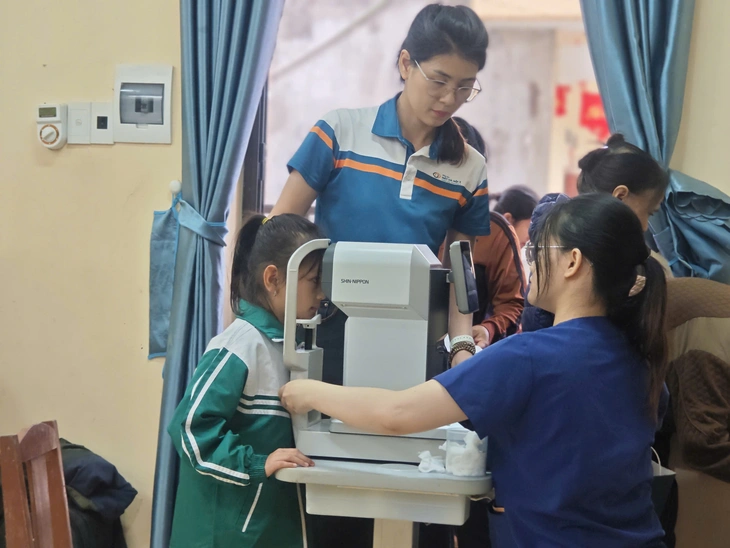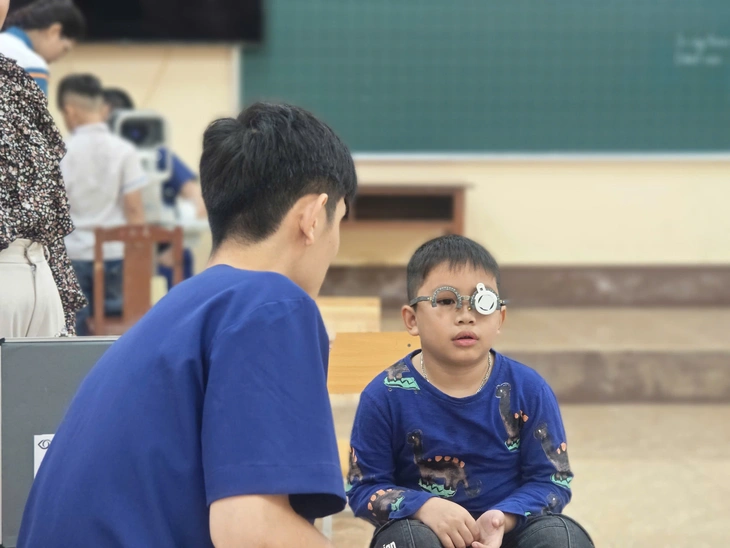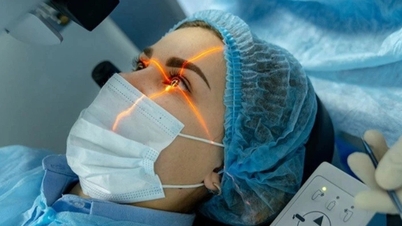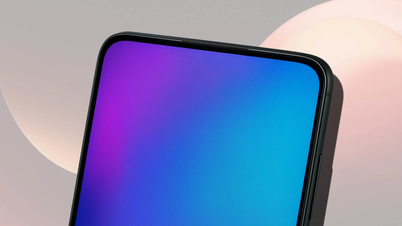
Children have their eyes refracted at school - Photo: D.LIEU
Many first graders have refractive errors.
On November 10, at Dao Xa Primary School (Tan Khanh Commune, Thai Nguyen Province), Hanoi Eye Hospital 2 organized a community examination program "Keep the light - Spread love" to provide free consultation and glasses for students here.
In the program, a total of 374 students were examined, and doctors discovered that 108 students had refractive errors, accounting for 29.3%, of which 26 students had myopia of more than 2 degrees. Of these, 92 students had never worn glasses or had never had an eye exam.
In class 1A alone, out of 33 students, 19 have refractive errors (accounting for nearly 60%), mainly nearsightedness, farsightedness and astigmatism. This is a very sensitive age for vision when children start learning to read and write.
If not detected early, many children may suffer from amblyopia or long-term vision loss. This not only affects their vision, but also has consequences for their ability to learn and play.
In addition, when doctors discover that their children are severely nearsighted, they prescribe glasses to reduce the increase in degree. However, many grandparents do not let them wear glasses because they are afraid of "wild eyes" or "wearing glasses will increase the degree".
According to experts, this is a dangerous misconception. When taking off glasses, children have blurred vision, making their eyes look tired. This is a normal reaction, not a sign of 'wild eyes'. On the contrary, not wearing glasses with the right prescription can cause myopia to increase rapidly, because the eyeball axis must expand to catch up with the image, each 1mm of expansion can increase myopia by 2-3 degrees.
Many children have congenital eye defects that are not detected early. Khanh (grade 1) has a congenital corneal scar that her family did not know about. If not intervened early, she is at risk of permanent vision loss.
Or Nguyen Quynh Anh (12 years old, grade 7), born prematurely, with cerebral palsy, disabled legs, was found to have astigmatism and strabismus. Her mother said that because she was born prematurely, she thought her child had such eye problems and did not think that she had strabismus. Despite having many motor disabilities, early examination and intervention helped her significantly improve her vision and learning ability.

After having their refraction measured, children will receive free glasses - Photo: D.LIEU
Mr. Le Xuan Duc, Deputy General Director of the hospital, shared that at each school, doctors have seen an increase in the rate of refractive errors. This program not only helps children get free examinations and glasses, but also aims to raise awareness among parents and the community about eye care for students.
Causes and consequences of living habits
According to Dr. Hoang Thanh Nga, Hanoi Eye Hospital 2, factors that increase refractive errors in children include: high-intensity studying, incorrect sitting posture, lack of light and overuse of electronic devices.
"Previously, refractive errors were mainly found in cities, but now many students in rural areas also suffer from them, due to changes in study habits and lack of attention to eye examinations," said Dr. Nga.
More worryingly, many children are not detected early, leading to amblyopia or strabismus, complications that can have long-term effects on visual function. The golden period for treating amblyopia is before the age of 8, after which recovery will be very difficult.
"Watching too much electronic devices is one of the risks that causes children to have refractive errors. However, children do not only watch electronic devices but also get the disease. Therefore, many parents subjectively think that if their children do not watch phones, they will not be nearsighted, forgetting that there are many other factors," said Dr. Nga.
Experts recommend that parents should have their children have eye exams every 6 months, especially before the new school year; encourage children to be outdoors for at least 2 hours a day; maintain a correct sitting posture, adequate lighting, do not let children bend over their notebooks or study in the dark; limit the time spent using phones and tablets, especially for young children; if you see your child squinting, blinking, looking close or complaining of headaches, take them to the doctor immediately.
Source: https://tuoitre.vn/vua-vao-lop-1-da-hon-nua-lop-can-thi-vien-thi-loan-thi-20251110154122127.htm


































































































![Dong Nai OCOP transition: [Article 3] Linking tourism with OCOP product consumption](https://vphoto.vietnam.vn/thumb/402x226/vietnam/resource/IMAGE/2025/11/10/1762739199309_1324-2740-7_n-162543_981.jpeg)










Comment (0)